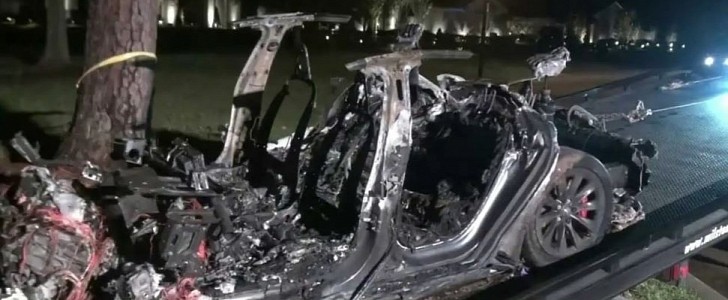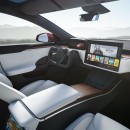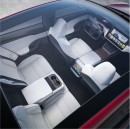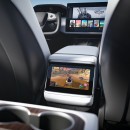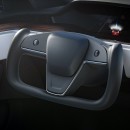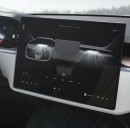On April 17, 2021, in a residential area near Spring, Texas, a 2019 Tesla Model S carrying two people crashed and burned. Both occupants were killed, and the police were quick to say that there was no one in the driver’s seat at the time of the crash.
Read: Autopilot misuse had caused another crash. That’s how most people chose to interpret the initial and subsequent statements from the police: if no one was behind the wheel at the moment of impact, it must mean the car was on Autopilot. That was backed by eyewitness accounts, saying that the two men had set off to test the car’s self-driving capabilities.
Three days after the crash, Tesla CEO Elon Musk addressed it on Twitter. He said Autopilot had not and could not have been engaged at the time for a variety of reasons, including safeguards that limit its use to certain roads. It was, yet again, another human-caused accident that everyone was quick to pin on technology, specifically Tesla’s Autopilot. He didn’t say this last part, but it was implied.
The National Transportation Safety Board (NTSB) has released the preliminary report into the investigation, and it contradicts what the police have been telling the media—and backs Musk. Surveillance footage from the owner’s house shows him getting into the driver’s seat of the Model S, with the passenger on his right. The car drove onto the roadway and sped out of sight: the report has determined that it traveled for about 550 feet (167 meters) before careening off the road at a curve, jumping a curb, and hitting a tree.
The NTSB used an “examplar car” to replicate the short drive and learned that, while they were able to activate Traffic Aware Cruise Control, they could not activate Autosteer. Both systems have to be activated to go in Autopilot mode. In other words, what Musk said was right: the Model S did have Autopilot, but it was not enabled at the time of the crash because Autopilot doesn’t work in residential areas, on unmarked roads.
That said, the NTSB notes that these are just preliminary findings that are subject to change and, as such, can’t help form conclusions regarding the cause of the crash. The investigation is ongoing.
Three days after the crash, Tesla CEO Elon Musk addressed it on Twitter. He said Autopilot had not and could not have been engaged at the time for a variety of reasons, including safeguards that limit its use to certain roads. It was, yet again, another human-caused accident that everyone was quick to pin on technology, specifically Tesla’s Autopilot. He didn’t say this last part, but it was implied.
The National Transportation Safety Board (NTSB) has released the preliminary report into the investigation, and it contradicts what the police have been telling the media—and backs Musk. Surveillance footage from the owner’s house shows him getting into the driver’s seat of the Model S, with the passenger on his right. The car drove onto the roadway and sped out of sight: the report has determined that it traveled for about 550 feet (167 meters) before careening off the road at a curve, jumping a curb, and hitting a tree.
The NTSB used an “examplar car” to replicate the short drive and learned that, while they were able to activate Traffic Aware Cruise Control, they could not activate Autosteer. Both systems have to be activated to go in Autopilot mode. In other words, what Musk said was right: the Model S did have Autopilot, but it was not enabled at the time of the crash because Autopilot doesn’t work in residential areas, on unmarked roads.
That said, the NTSB notes that these are just preliminary findings that are subject to change and, as such, can’t help form conclusions regarding the cause of the crash. The investigation is ongoing.
Your research as a private individual is better than professionals @WSJ!
— Elon Musk (@elonmusk) April 19, 2021
Data logs recovered so far show Autopilot was not enabled & this car did not purchase FSD.
Moreover, standard Autopilot would require lane lines to turn on, which this street did not have.
